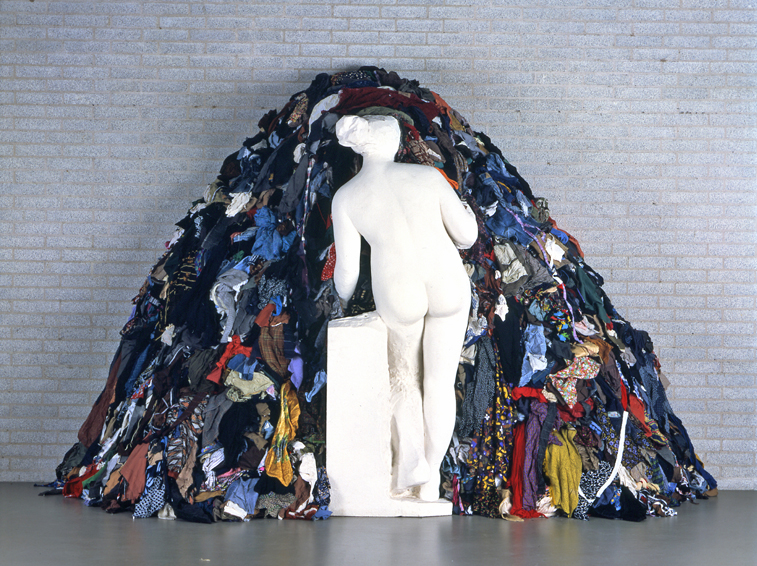
Pan, Van Gogh, Seurat, Dubuffet, Brancusi
The Floating Sculpture (the ‘Swan’) by Marta Pan, the Terrace of a café at night by Van Gogh, Le Chahut by Seurat, the Jardin d’émail by Dubuffet, Le Commencement du monde by Brancusi, these are just some of the masterpieces. Icons are not created overnight, but become iconic in the course of time. And once they achieve this, their iconic status is confirmed time and again. The very fact that you can find Van Gogh’s Terrace of a café at night on countless posters, fridge magnets, dinner trays, menu cards and a host of other objects contributes considerably to the powerful attraction the original work exerts on hordes of Japanese and American visitors armed with the newest cameras.
arte povera
Some works have become icons almost despite themselves, even against the intentions of their creators. This is more or less what has happened to Venere degli stracci (Venus of the rags) by Michelangelo Pistoletto. Pistoletto was part of Arte Povera, a characteristic phenomenon from the 1960s. Arte Povera artists manifested themselves through ‘azioni’ (actions), temporary avant-garde activities in the streets and in empty buildings of Italian cities. The ‘azioni’ were aimed at breaking through the traditional role pattern of the artist, art and viewer and not at confirming the status of art.
venus
In Venere degli stracci Pistoletto strips Venus, goddess of goddesses, of her status. He transforms a classic sculpture that once was fashioned in her image into a rough, oversized copy of resin, which seems more at home in the local garden centre than in an antiquities museum. And if that is not enough, the artist has her least elevated or noble side turned to the viewer and has Venus pressing her nose in a colourful heap of old rags, remains of former actions in which Pistoletto used textile waste to wipe off paint. The goddess Venus, who embodies the classic ideal of beauty, is mirrored in a huge pile of old rags. She has become a naked woman of plastic, one with everyday life. And with that new identity she became the icon of Arte Povera, a symbol of the anti-institutional character of the movement, but still one that has been welcomed with open arms by the museum, in this case a museum for modern art.
top 75
On 13 July the museum will celebrate its 75th anniversary. In Top 75, the exhibition which will open on that day, the Kröller-Müller Museum will highlight its icons, as seen by the museum and the public. In all likelihood Pistoletto’s Venus will be in the museum selection for the exhibition.

Lisette Pelsers
March 2013
